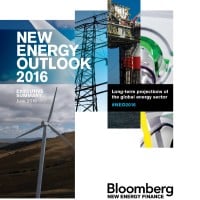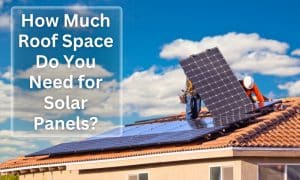Cheaper coal and gas will do nothing to derail the renewable energy revolution according to BNEF’s New Energy Outlook 2016.
Bloomberg New Energy Finance states 60% of installed capacity will be zero-emission energy sources by 2040 and wind and solar power will take the lion’s share of new power generation capacity added – 64%.
Solar power is forecast to be the cheapest generation technology in most countries by 2030 and account for 3.7TW, or 43%, of new capacity added in 2016-40. This will represent $3 trillion of new investment.
A very important point in the report is that around 2027, new wind and solar will be cheaper than running existing coal and gas generators, particularly where carbon pricing has been implemented. In just over a decade we may see a marked uptick in current fossil fuel generation plants being shuttered. The report says there will be a net closure of 286GW of coal in OECD economies by 2040.
By 2040, BNEF states Australia will have wind and solar penetration of more than 50%.
Another prediction will get electric vehicle supporters excited – BNEF’s modeling suggests EV’s will comprise a quarter of the global car fleet by 2040. This is also good news for the residential and commercial solar sector as it will accelerate a reduction in battery costs through technology development, economies of scale and enhanced manufacturing know-how.
BNEF sees a very healthy future for small-scale solar power, with it accounting for 10% of global generating capacity by 2040. With regard to home battery systems, Bloomberg expects solar energy storage to be commonly deployed alongside rooftop solar panel systems by 2020.
Behind-the-meter energy storage generally will see a sharp rise from around 400MWh today to nearly 760GWh in 2040.
While the news is upbeat about renewables generally, forecasted additions won’t be enough to rein in carbon emissions to the required degree.
“Some $7.8 trillion will be invested globally in renewables between 2016 and 2040, two thirds of the investment in all power generating capacity, but it would require trillions more to bring world emissions onto a track compatible with the United Nations 2°C climate target,” said Seb Henbest, lead author of the report and head of Europe, Middle East and Africa for BNEF.
BNEF suggests approximately USD $5.3 trillion would need to be invested in zero-carbon power by 2040 to prevent carbon dioxide levels rising above 450 parts per million.
An executive summary of BNEF’s New Energy Outlook 2016 can be downloaded here (registration required).
















































